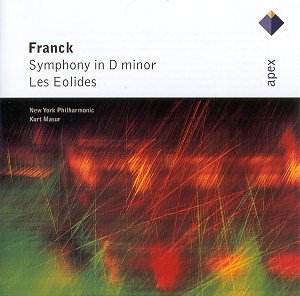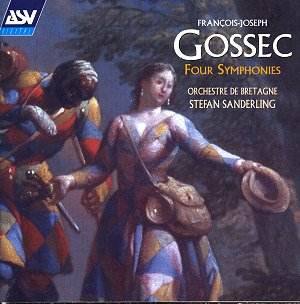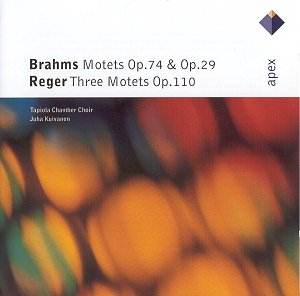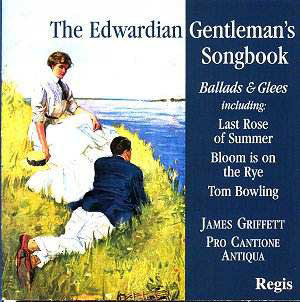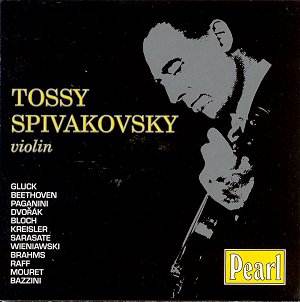 Composer: Tossy Spivakovsky
Composer: Tossy Spivakovsky
Works: Bazzini: La Ronde des Lutins; Mouret: Sarabande in E minor; Raff: Cavatina in D Op 85 No 3; Gluck: Dance of the Blessed Spirits; Bloch: Nigun; Kreisler: Minuet in the style of Porpora, Sicilienne et Rigaudon, Caprice viennois, Tambourin chinois; Paganini: Sonata No 11 in A, Sonata No 12 in C, Caprice No 20; Dvořák: Slavonic Dance No 10 in E minor; Beethoven: Turkish March arr Leopold Auer, Chorus of Dervishes arr Leopold Auer; Brahms: Hungarian Dance No 1 arr Joseph Joachim, Waltz No 15 arr David Hochstein; Wieniawski: Scherzo-tarantelle Op 6; Sarasate: Introduction and Tarantelle, Danza Española No 6 “Zapateado”
Performers: Tossy Spivakovsky, violin; Piano accompaniment
Recording: 1924-1931
Label: Pearl GEM 0158
Tossy Spivakovsky, a name perhaps less recognized in the annals of violin greatness, emerges in this remarkable collection of early recordings to remind us of the fierce individuality and technical prowess of a musician who, despite the vicissitudes of his career, commanded a distinctive voice in the early 20th-century classical landscape. Recorded between 1924 and 1931, these performances present a vivid tableau of a developing artist, one whose unique stylistic attributes and interpretative decisions echo through the nuances of these varied works.
The opening track, Bazzini’s “La Ronde des Lutins,” reveals Spivakovsky’s ability to navigate the technical demands of virtuosic passages with a mixture of flair and precision. His left-hand pizzicatos are delivered with an effortless panache, showcasing not only his dexterity but also a certain theatricality that invites the listener into the spirit of the piece. The rapid vibrato, characteristic of Spivakovsky’s style, is employed judiciously, providing a core to the sound while eschewing excessive oscillation, which can sometimes detract from lyrical passages. This vibrato, along with his unconventional bow grip, contributes to a sound that is both immediate and arresting, if occasionally lacking in tonal variety.
Spivakovsky’s interpretation of Gluck’s “Dance of the Blessed Spirits,” while yearning and heartfelt, suffers from a hurried execution, particularly in the accompanying piano lines, likely contributing to a sense of over-eagerness. This impatience contrasts with the reflective quality one might expect from such a piece. The following Raff Cavatina reveals a more mature side, as Spivakovsky adopts a slow, deliberate tempo that allows for a rich exploration of lyrical nuance, albeit with some moments that might strike contemporary ears as overly sentimental.
The recordings of Paganini, particularly the Sonatas and Caprice No 20, exemplify Spivakovsky’s technical prowess, where he triumphantly dismantles the challenges with a vigorous abandon. The execution is vigorous yet polished, revealing an interpretative confidence that is particularly compelling in the second sonata’s intricate passagework. Dvořák’s “Slavonic Dance No 10,” while exuberantly paced, occasionally veers into over-emphasis, suggesting a need for restraint that could have elevated the performance further. In contrast, the Brahms selections, notably the “Hungarian Dance No 1,” are executed with a more refined touch, balancing vigor with elegance.
The engineering quality of these early recordings is commendable, with minimal surface noise allowing Spivakovsky’s distinctive sound to resonate. However, certain tracks, such as the murky “Turkish March,” do suffer from a lack of clarity, which can obscure the fine details of Spivakovsky’s playing. The booklet notes by Tully Potter offer a comprehensive biographical context, enriching the listening experience with a deeper understanding of Spivakovsky’s artistic journey.
This collection serves as a vital reminder of Tossy Spivakovsky’s contributions to the violin repertoire, capturing the evolution of an artist from promising youth to a more fully realized performer. While moments of interpretative excess and tonal limitations emerge, they are balanced by his undeniable technical brilliance and fervent musicality. This anthology not only preserves the legacy of a somewhat overlooked violinist but also invites a re-evaluation of his artistry, making it a valuable addition for collectors and enthusiasts alike.
